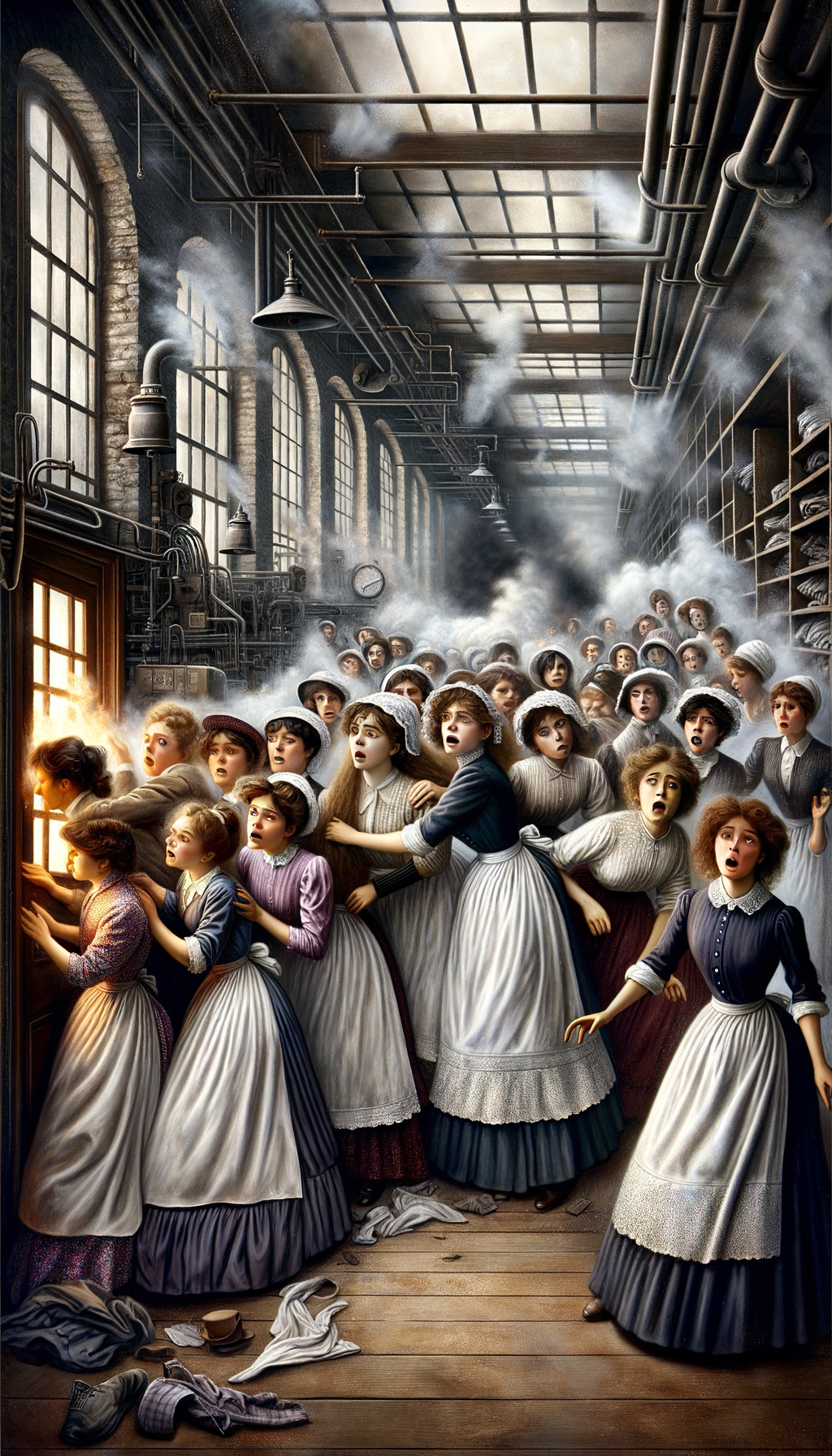United States – Inferno in the Sky: The Triangle Shirtwaist Factory Fire of 1911
TLDR;
- Event: On March 25, 1911, a fire broke out at the Triangle Shirtwaist Factory in New York City, trapping workers on the 8th, 9th, and 10th floors of the Asch Building due to locked exits and a faulty fire escape.
- Impact: The fire resulted in 146 deaths, mostly young immigrant women, highlighting the dangerous working conditions in factories at the time.
- Significance: The tragedy led to widespread public outrage and spurred significant labor reforms, including new laws for workplace safety and workers’ rights.
- Legacy: The Triangle Shirtwaist Factory Fire remains a pivotal event in American labor history, symbolizing the need for workplace safety and the impact of collective action.
–
Story
The air was thick with the acrid smell of smoke as flames licked the walls of the Triangle Shirtwaist Factory. Panic spread like wildfire among the workers, mostly young immigrant women, trapped on the 8th, 9th, and 10th floors of the ten-story Asch Building. Their screams echoed through the streets of New York City, a harrowing symphony of desperation and fear.

In the early 20th century, New York was a bustling hub of industry, its skyline punctuated by the silhouettes of factories. The Triangle Shirtwaist Factory, located in the heart of Manhattan, was one of the largest garment factories in the city. It employed hundreds of workers, many of whom were recent immigrants seeking the American dream. But the reality was far from idyllic. The factory was a tinderbox, with flammable materials strewn about and the door to the Washington Place stairway on the 9th floor locked to prevent theft.
On March 25th, 1911, a fire broke out on the eighth floor. Within minutes, the inferno spread, fueled by the fabric and paper patterns that littered the workspaces. The workers, trapped by the locked door and an inadequate fire escape that collapsed during the fire, faced a grim choice: perish in the flames or leap from the windows to the pavement below. In the end, 146 lives were lost, their dreams extinguished in the blaze.
The tragedy of the Triangle Shirtwaist Factory Fire was a turning point in American history. Public outrage over the appalling conditions and the loss of life led to a wave of reforms. New laws were enacted to improve workplace safety, regulate working hours, and protect the rights of workers. The fire became a catalyst for change, igniting a movement that would transform labor laws across the nation.
The legacy of the Triangle Shirtwaist Factory Fire endures, a stark reminder of the cost of neglect and the power of collective action.
–
| Would a different approach to factory safety have prevented this tragedy? |